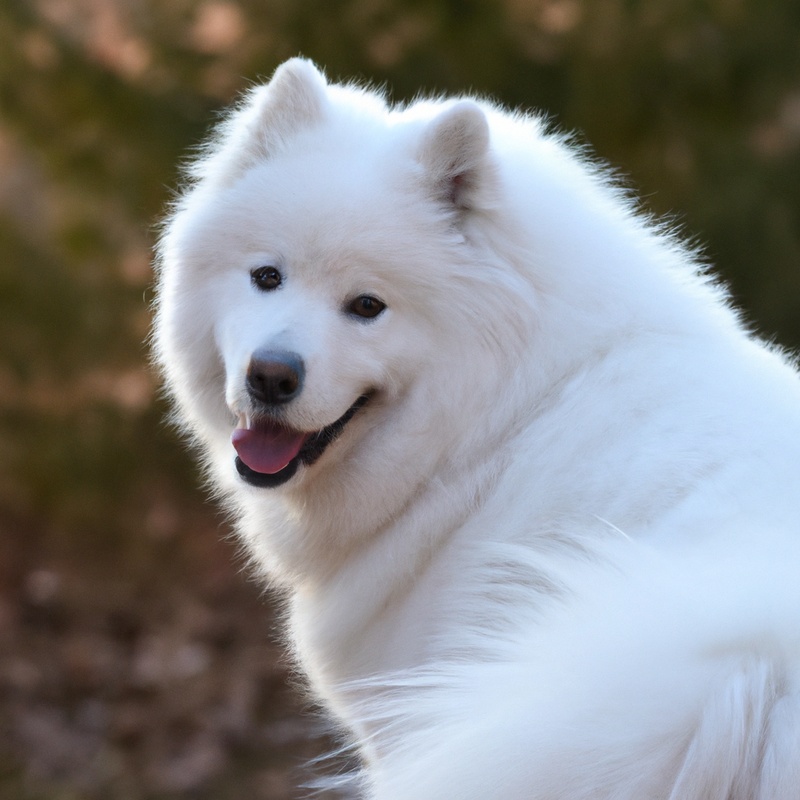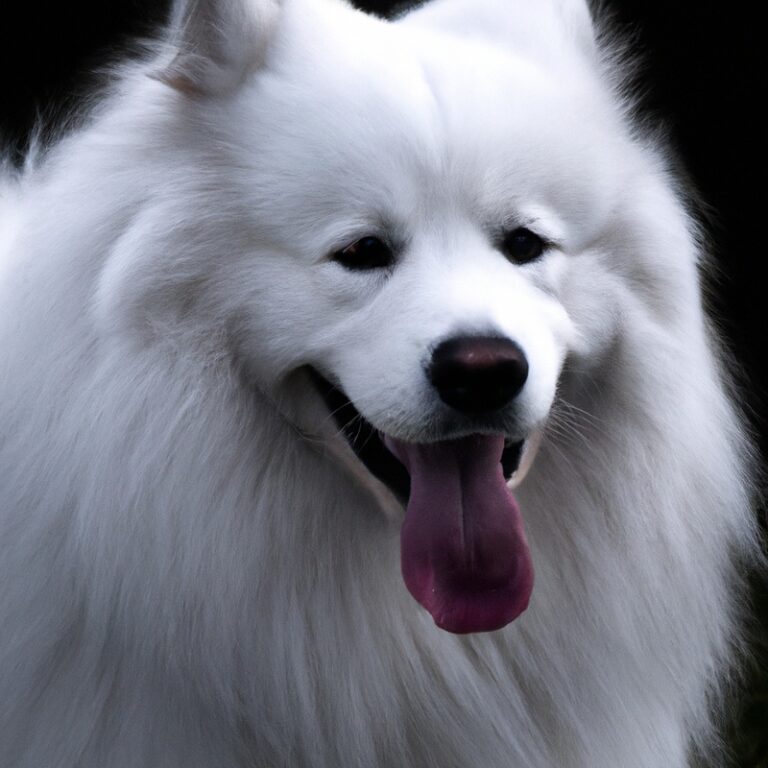How To Introduce a Samoyed To a New Dog Park?
Key Takeaways:
- Bring your Samoyed to the new dog park on a leash to ensure a controlled introduction.
- Gradually acclimate your Samoyed to the new environment by starting with short visits and gradually increasing the time spent at the park.
- Monitor your Samoyed’s behavior and body language to ensure they are comfortable and interacting well with other dogs.
- Always be prepared to intervene and remove your Samoyed from the park if any signs of aggression or discomfort arise.
Are you a proud Samoyed owner ready to explore the world of dog parks with your furry friend? Exciting times are ahead! However, introducing your Samoyed to a new dog park requires careful planning and preparation to ensure a positive experience for both you and your pup.
As an expert in dog behavior and training, I’ll guide you through the process step by step.
From understanding the unique characteristics of Samoyeds to choosing the right dog park and handling common challenges, this comprehensive guide will equip you with the knowledge and techniques needed for a successful Samoyed adventure at the dog park. Let’s get started!
| Action | Description |
| 1. Preparation | Make sure your Samoyed is up to date on vaccinations and has a proper identification. Also, ensure your dog is leash trained. |
| 2. Research | Find a dog park in your area that allows all breeds and has a separate section for smaller dogs if needed. |
| 3. Schedule a Visit | Visit the dog park during less busy times to observe the park’s atmosphere and the behavior of other dogs. |
| 4. Gradual Introduction | Start by walking your Samoyed around the perimeter of the park on a leash. Allow your dog to sniff and become familiar with the scents. |
| 5. Leash-Free Area | When your Samoyed is comfortable with the surroundings, enter the leash-free area while closely supervising their behavior. |
| 6. Observe | Watch your dog’s body language and interactions with other dogs. Redirect any potential conflicts and reward positive interactions. |
| 7. Monitor | Keep a close eye on your Samoyed at all times to ensure their safety and intervene if necessary. |
| 8. Stay Calm | Remain calm and confident throughout the process to minimize any anxiety your Samoyed may feel. |
| 9. Positive Reinforcement | Praise and reward your Samoyed for good behavior, such as coming when called or playing nicely with other dogs. |
| 10. Take Breaks | If your Samoyed becomes overwhelmed or tired, take breaks outside the park before continuing the introduction. |
| 11. Enjoy | Once your Samoyed is comfortable and enjoying the dog park, have fun and let them socialize and play with other dogs! |
Understanding the Samoyed breed
Characteristics of Samoyeds
Samoyeds are a unique breed known for their friendly and sociable nature.
They are medium-sized dogs with a distinctive smile and bright eyes that can melt your heart.
Here are a few key characteristics that make Samoyeds so special:
- Friendly and Gentle: Samoyeds are known for their friendly and gentle nature, making them great companions for families and individuals alike. They often get along well with other dogs and are generally good with children.
- Active and Energetic: These dogs have a lot of energy and love to stay active. Regular exercise is important to keep them happy and healthy. They enjoy activities like daily walks, playtime, and even participating in dog sports.
- Intelligent and Alert: Samoyeds are intelligent dogs and are quick learners. They can be trained to perform various tricks and tasks. Their alert nature also makes them excellent watchdogs, as they will alert you to any potential dangers or strangers.
- Double-Coat: One of the most distinct features of Samoyeds is their beautiful double-coat. It consists of a soft and dense undercoat, and a longer, harsh outer coat that helps protect them from the cold. Regular grooming is necessary to maintain their coat’s health and prevent matting.
- Vocal and Communicative: Samoyeds have a range of vocalizations that they use to communicate with their owners. They are known to “talk” through barks, howls, and even “singing.” This can make for some amusing and entertaining moments.
Overall, Samoyeds are wonderful dogs with a loving and loyal nature.
However, they do require proper care, attention, and training to thrive in a happy and healthy environment.
Socialization needs of Samoyeds
Samoyeds have a strong need for socialization to thrive.
They are friendly and gentle dogs, but early and ongoing socialization is important to ensure they are well-adjusted and comfortable in various situations.
Exposing them to different people, animals, and environments from an early age will help them develop into confident and well-behaved companions.
Regular trips to the dog park, supervised playdates, and positive training classes can all contribute to their social development.
Introduce them to new experiences gradually and positively, and always reward them for good behavior.
Remember, a well-socialized Samoyed is a happy and balanced one!
Preparing your Samoyed for the new dog park
Basic training commands for Samoyeds
Teaching your Samoyed basic training commands is essential for their safety and your peace of mind. Here are a few commands you can start with:
- Sit: Teach your Samoyed to sit on command by using treats as rewards. Hold a treat above their head and slowly move it back, prompting them to lower their bottom. Once they sit, say “sit” and give them the treat.
- Stay: Start by having your Samoyed sit. Open your palm towards them and say “stay” while taking a step back. Gradually increase the distance as they become more comfortable with the command.
- Come: Use a happy tone and say “come” while crouching down. Encourage your Samoyed to come towards you by using treats or a favorite toy.
- Leave it: Hold a treat in your closed hand and say “leave it.” Wait for your Samoyed to stop trying to get the treat. Once they do, reward them with a different treat or praise.
Remember to keep training sessions short and positive. Practice in a quiet, distraction-free environment before moving on to more challenging situations.
Soon, you’ll have a well-behaved Samoyed ready to enjoy their time at the dog park!
Ensuring your Samoyed is properly vaccinated
Ensuring your Samoyed is properly vaccinated is essential for their health and the safety of those around them. Regular vaccinations protect against diseases such as rabies, distemper, and parvovirus.
When getting your Samoyed vaccinated, discuss with your veterinarian which vaccines are necessary based on their lifestyle and local regulations.
Keep a record of their vaccinations and make sure they receive boosters as recommended. Regular vaccinations will give you peace of mind and help keep your furry friend healthy and happy.

Grooming and brushing your Samoyed before visiting the park
Before heading to the dog park with your Samoyed, it’s important to groom and brush them.
This helps keep their coat clean and prevent mats or tangles during play.
Start by thoroughly brushing their fur to remove any loose hair and debris.
Don’t forget to pay attention to their undercoat, as it can easily tangle.
Trim their nails to prevent painful scratches during playtime.
Lastly, give them a quick once-over to ensure they’re free from any fleas or ticks.
A well-groomed Samoyed is ready to have a blast at the park!
Choosing the right dog park for your Samoyed
Researching local dog parks
Researching local dog parks is important to ensure that you find the best one for your Samoyed. Here are a few tips to help you with your research:
- Ask fellow dog owners for recommendations in your area.
- Look for online reviews and ratings of different dog parks.
- Visit the parks yourself to get a firsthand look at the facilities and observe the atmosphere.
- Consider the park’s amenities, such as water fountains, shaded areas, and separate areas for small and large dogs.
- Check for any specific rules or regulations that may be important for your Samoyed, such as breed restrictions or vaccination requirements.
Remember, finding a dog park that meets your Samoyed’s needs will contribute to a positive and enjoyable experience for both of you.

Factors to consider when selecting a dog park
When selecting a dog park, there are a few important factors to consider.
- Size and layout: Look for a park that is spacious and has separate areas for large and small dogs to ensure safety and prevent any potential conflicts.
- Amenities: Check if the park has amenities like water stations, shade, benches, and waste disposal stations to ensure a comfortable and convenient experience for both you and your dog.
- Location and accessibility: Consider a park that is easily accessible from your home, with ample parking and well-maintained pathways for a hassle-free visit.
- Rules and regulations: Familiarize yourself with the park’s rules and regulations, such as leash requirements and any specific breed restrictions, to ensure a positive and respectful atmosphere for all park-goers.
- Cleanliness and maintenance: Look for a park that is well-maintained and regularly cleaned to ensure the health and safety of your dog.
By keeping these factors in mind, you can choose a dog park that offers a safe, enjoyable, and stimulating environment for your furry friend.

Introducing your Samoyed to the new dog park
Preparing your Samoyed mentally and physically
Preparing your Samoyed mentally and physically is key to ensure a smooth and enjoyable experience at the new dog park. To get your Samoyed ready, engage in regular exercise sessions to keep them physically fit and burn off excess energy.
Mental stimulation is also important, so incorporate interactive toys and puzzles into their routine.
Gradually expose your Samoyed to new environments and socialize them with different dogs to build their confidence. Positive reinforcement and patience are crucial in the preparation process.
Introducing your Samoyed to the park gradually
To introduce your Samoyed to the park gradually, start by taking short walks around the perimeter of the park. This will help your dog get accustomed to the sounds and smells of the environment.
Gradually increase the time spent in the park, allowing your Samoyed to explore at their own pace.
Keep a close eye on your dog’s body language and behavior to ensure they’re comfortable. Consider bringing along a familiar toy or blanket to help them feel secure.
Remember to always prioritize your Samoyed’s safety and well-being during the introductions.
Monitoring your Samoyed’s behavior and interactions
When you bring your Samoyed to a new dog park, it’s important to monitor their behavior and interactions to ensure their safety and the well-being of other dogs and owners.
Keep an eye on how your Samoyed responds to different dogs, especially if they show signs of discomfort or aggression.
If needed, intervene and redirect your Samoyed’s attention to prevent any potential conflicts.
Pay attention to their body language and provide positive reinforcement for good behavior.
Stay vigilant and be ready to step in if necessary, always prioritizing your Samoyed’s safety.
Handling common challenges at the dog park
Dealing with aggression or overexcitement
If your Samoyed is showing signs of aggression or overexcitement at the dog park, there are a few strategies you can try.
Firstly, make sure your dog is properly trained and socialized.
This will help them better understand appropriate behavior around other dogs.
Secondly, keep an eye on your dog’s body language and intervene if you notice any signs of tension or aggression.
Redirect their attention with a toy or treat, and remove them from the situation if necessary.
Lastly, consider consulting a professional dog trainer or behaviorist for additional guidance.
Remember, the key is to prioritize the safety and well-being of all dogs at the park.
Managing interactions with other dogs and owners
When managing interactions with other dogs and owners at the dog park, it’s important to be aware of some key tips. Firstly, always approach other dogs and owners with caution and respect.
Pay attention to your dog’s body language and be ready to intervene if necessary.
Secondly, encourage positive interactions by using calm and positive reinforcement techniques. Thirdly, be mindful of the park’s rules and regulations and follow them to ensure a safe and enjoyable experience for everyone.
Empathy and open communication are crucial for harmonious interactions.
Preventing your Samoyed from escaping or wandering
To prevent your Samoyed from escaping or wandering, there are a few key strategies you can employ. Firstly, ensure your yard is securely fenced, with no gaps or loose areas where your dog could slip through.
Regularly check the fence for any damage and repair it promptly.
Secondly, provide your Samoyed with plenty of exercise and mental stimulation. A tired dog is less likely to be restless and attempt to escape.
Regular walks, play sessions, and puzzle toys can help exhaust their energy.
Thirdly, consider crate training your Samoyed. This creates a safe and comfortable space where they can relax when you’re unable to supervise them.
It also helps prevent them from becoming anxious or bored and trying to escape.
Lastly, always keep an eye on your Samoyed when outside or in unfamiliar places. Supervision is crucial to prevent them from wandering off or getting into trouble.
Also, ensure they have proper identification, such as a collar with tags or a microchip, in case they do manage to escape.
Tips for a successful dog park experience with your Samoyed
Bringing essential supplies for your Samoyed
When heading to the dog park with your Samoyed, make sure you bring these essential supplies:
- Leash and harness: Keep your Samoyed under control and prevent any runaway incidents by using a sturdy leash and a well-fitted harness.
- Waste bags: Always clean up after your dog. Bringing waste bags ensures you can properly dispose of their waste and keep the dog park clean for everyone.
- Water and bowl: Stay hydrated during your park visit. Bring a collapsible water bowl and some fresh water to keep your Samoyed refreshed throughout the outing.
- Treats: Reward your Samoyed for good behavior and use treats for training purposes. Just make sure to choose healthy and appropriate treats for your furry friend.
- Toys: Keep your Samoyed entertained and engaged with their favorite toys. This will help prevent boredom and reduce the chances of them getting into trouble.
Remember to pack these essential supplies before heading to the dog park for a fun and enjoyable experience with your Samoyed!
Establishing a routine and set boundaries
Establishing a routine and setting boundaries for your Samoyed at the dog park is essential.
Firstly, create a consistent schedule of visiting the park to help your dog feel more comfortable and confident.
Secondly, set clear boundaries about acceptable behavior, such as no jumping on people or excessive barking.
Thirdly, enforce these boundaries consistently by using positive reinforcement and rewards.
Finally, remember to be patient and understanding as your Samoyed adjusts to the park environment.
Encouraging positive social interactions for your Samoyed
Encouraging positive social interactions for your Samoyed is essential for their well-being and happiness. Here are some tips to help you foster positive interactions:
- Socialization is key: Expose your Samoyed to different people, dogs, and environments from a young age to help them become comfortable and confident in various settings.
- Choose dog parks wisely: Find well-maintained parks with separate areas for small and large dogs. This ensures a safer and more enjoyable experience for your Samoyed.
- Observe body language: Pay attention to your Samoyed’s body language and that of other dogs. Look for signs of discomfort, fear, or aggression, and intervene if necessary.
- Positive reinforcement: Reward your Samoyed for calm and appropriate behavior during interactions. This will encourage them to continue behaving well around other dogs.
- Take it slow: Introduce your Samoyed to new dogs gradually. Start with controlled, supervised playdates or group walks to help them build positive associations.
Remember, every Samoyed is unique, so it’s important to adapt these tips to your dog’s individual needs. With patience and consistency, you can help your Samoyed develop positive social skills and enjoy their time at the dog park.
Frequently Asked Questions
How do I know if my Samoyed is ready for the dog park?
To determine if your Samoyed is ready for the dog park, look for signs of socialization and obedience.
First, make sure your dog is comfortable interacting with other dogs in a controlled environment.
Test their behavior during supervised playdates or training sessions with well-behaved dogs.
Also, assess their obedience skills such as responding to commands and recall.
If your Samoyed shows positive social skills, listens well, and exhibits good recall, it may be ready to enjoy the dog park experience.
Remember to monitor their behavior and gradually introduce them to new environments.
Can Samoyeds be off-leash at the dog park?
Samoyeds can be off-leash at the dog park, but it depends on the individual dog. Some Samoyeds have a strong prey drive and may not have reliable recall, making it risky to let them off-leash in an open area.
However, if your Samoyed is well-trained, has good recall, and gets along well with other dogs, they may enjoy running freely in a designated off-leash area.
Always assess your dog’s behavior and recall reliability before deciding if off-leash play is suitable for them.
What if my Samoyed doesn’t get along with other dogs?
If your Samoyed doesn’t get along with other dogs, it’s important to address the issue before visiting a dog park. Start by observing their behavior and identifying any triggers.
Consult a professional dog trainer for guidance on socialization and obedience training.
Gradually introduce your Samoyed to other dogs in controlled environments, such as group training classes or playdates, to build positive associations. Patience and consistent training will help improve their social skills over time.
Make sure to prioritize the safety and comfort of all dogs involved.
Final Verdict
Introducing a Samoyed to a new dog park requires careful preparation, training, and monitoring. Understanding the breed’s characteristics and socialization needs is essential in providing a positive experience for both your Samoyed and other park visitors.
By choosing the right dog park, preparing your Samoyed physically and mentally, and handling common challenges effectively, you can ensure a successful and enjoyable experience.
Remember to bring essential supplies, establish boundaries, and encourage positive social interactions. Trust the process, be patient, and enjoy watching your Samoyed thrive in their new social environment.







